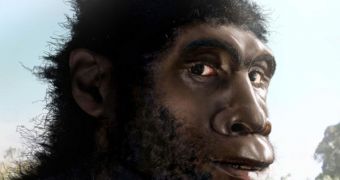One of the most important things to do when discovering a new species of animals or of ancient hominids, in the fossil record is to depict it as accurately as possible. For many years, paleoartists, which specialize in creating drawings or sculptures of creatures that lived millions of years ago, have accompanied archaeologists and paleontologists in their research trips, offering them basic clues of how the fossils looked like when the animals that created them were still alive. Now, the artist's tool bag is also expanding, with the advent of modern, 3d modeling technologies, Wired reports.
“What’s driven my work has always been, ‘I want to see that thing alive. I want to see that world'. Computer graphics is developing to the point where, in movies like 'Benjamin Button,' you don’t know what parts are not digital,” explains paleoartist Viktor Deak. He was responsible for reconstructing some early hominids and his work was broadcast on the PBS network in November, as part of the Becoming Human series of documentaries. He explains that computers offer artists the ability to control their work in manners that were never-before thought possible.
In addition to offering a representation of our ancestors, the models can also make them move and interact, which is not something that can be said of sculptures and drawings. Paleoartists are not just drawing, or sculpting. They are also excellent anatomists, taking into account things like the way tissues are shown in fossil models, as well as the distribution of muscles. Deak explains that most such artists have no idea how their work will look like once it's completed. Rather, they take their design one step at a time. Computers have not totally replaced manual work, he adds, saying that he always begins by sculpting models in clay, the old-fashioned way.
Only after this work is done does he begin to transpose the things he created into a digital environment, usually through Photoshop. After scanning the basic work, he adds numerous layers of textures and colors, which allow the thing being depicted to resemble its former self more and more. “There’s no limitation on what you can do, as long as your machine can handle it,” he explains. “They look realer to me'. For a couple seconds, people might say, ‘What’s that a photo of? Where’d you get that picture? There’s that moment of belief when they’re not looking at it as a painting or sculpture, but as a living thing.”

 14 DAY TRIAL //
14 DAY TRIAL //